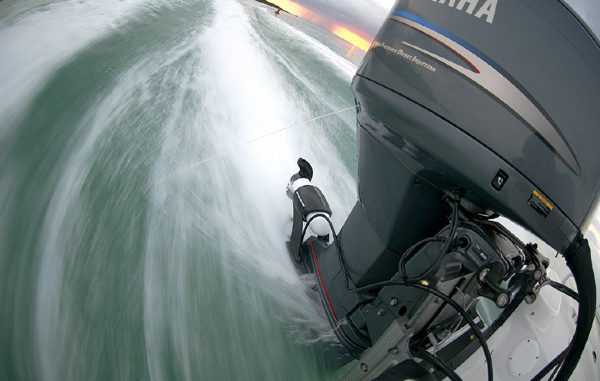
Follow this advice to greatly up your chances at scoring on a public-land buck this season.
“It’s easier to ski behind a fishing boat than fish out of a ski boat.”
Unfortunately, some fishermen have to ignore those words of wisdom and buy a pleasure boat. They are more comfortable for the whole family and much less expensive than pure fishing rigs or fish-and-ski boats. So, what happens when you buy that plush, streamlined beauty, and try to fish out of it?
The first thing you will need is an electric trolling motor. A quick look at the bow of your new boat will probably rule out a bow-mount motor. Part of the average runabout’s eye appeal is a rounded nose with no flat deck area on top and no access underneath.
Installing a bow mount motor usually means attaching a homemade faring that conforms to the curve of the bow deck and has a flat mounting surface on top.
The bow will not be reinforced to handle a motor, so you’ll have to cut out an access port and remove enough foam flotation (never a good idea) so you can put treated wooden scabs under the deck to strengthen the areas where the mounting bolts pass through. Then you have to spray in new foam and install an access port to hide the hole.
The resulting installation sort of works (if the fiberglass is strong enough to resist cracking), but it ruins the aesthetics of the boat.
What about the stern? Most of these runabouts don’t have a flat transom capable of mounting a traditional transom-mounted electric motor, and if they did you would have trouble getting close enough to the motor to run it comfortably.
So, what’s the answer? All of these boats have an I/O outdrive or outboard motor with a cavitation plate, and it can lead to your best solution. Electric motors designed to mount on top of a lower unit’s cavitation plate have been around for a long time, but have never achieved the popularity their problem-solving design should merit.
The cavitation plate on the lower units of most engines rides at the water’s surface or very close to it when the boat is planed. A motor mounted on top of it rides completely out of the water. Only the heads of the electric motor’s mounting bolts cause drag under normal conditions so there is no detectable reduction in cruising performance.
Stop the boat, trim down the lower unit and the electric motor submerges completely, ready to go to work. The electric turns as you turn the gas engine’s lower unit with the steering wheel. The lower unit gives you extra rudder effect, and the boat handles as well as it does with the gas engine but with enough stealth to help you sneak up on fish.
Motors steered by cables and independent hydraulic steering units work great, but big I/O’s with engine-driven power steering may not work with these electrics. You can find out if your boat qualifies in an instant: If you can turn your lower unit with the engine shut down, then these electric motors will work for you.
Minn Kota completely redesigned its line of freshwater and saltwater engine-mounted motors for 2006. The old switchbox is gone, replaced with a solid-state motor controller. Single motors are available in 12, 24 and 36 volts producing 55, 80 and 101 pounds of thrust, respectively. Dual motor assemblies in 24- and 36-volt versions develop 160 and 202 pounds of thrust. All models use the same mounting bracket so moving up or down in power doesn’t require drilling any new holes.
For more information, contact Minn Kota at 800-227-6433 or visit minnkotamotors.com.


